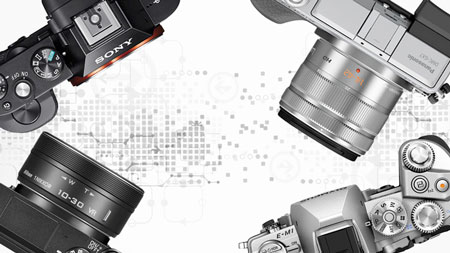Here’s an interesting article by the Economist on where mirrorless camera technology has come from, where it is and where it’s heading to. There’s however a factual error. The gem made by Epson, the iconic RD1 rangefinder introduced in 2004, a joint development by Seiko Epson and Cosina using Leica M mount lenses, wasn’t the first mirrorless camera ever. Despite being a digital classic to this day, that honor belongs to Olympus’s Four Thirds E-1, introduced in late 2003. Many many mirrorless cameras have seen the light of day since and got quickly forgotten by digital’s merciless advances. Mirrorless cameras, argues the article, are left squeezed between increasingly more sophisticated smartphones that cost much less, and SLRs that cost not all that more. Quo vadis, mirrorless?

Caveat ahead, the article’s a bit dated. Does that make it less relevant? What mirrorless inroads have been achieved since?
Some good news ahead. Sony posted significant imaging division income gains in 2015 financial year-end report, attributing the earnings to a more favorable mix of high-value products, no doubt including its full-frame mirrorless Alpha line and premium RX series compacts.
Especially the mix between full-frame and mirrorless is well received by the market. Sony is proving that making cameras isn’t doomed, just be innovative, creative and do it the right way.
Key Economist excerpts:
While by no means a flop, the most innovative idea to come out of the Japanese camera industry in decades — the mirrorless digital camera — has not exactly taken the photographic world by storm. By dispensing with the mirror in front of the shutter of a digital single-lens reflex (SLR) camera — which redirects the image created by the lens to an optical viewfinder above, before flipping briefly out of the way for a picture to be taken — the mirrorless camera promised to be lighter, smaller and quieter, with a specification only marginally less than its bulkier big brother at the pricier end of the market.
Unfortunately, the shutterbugs who were supposed to flock to the new cameras found other ways of taking pictures. A number of serious (“prosumer”) amateurs and even a few professional photographers have become staunch mirrorless fans, especially now they provide almost as much control over shooting conditions as full-sized digital SLRs. But more mainstream consumers have generally shied away from them, at least in America and Europe, though less so in Japan.
Whereas popular photography was once all about making prints for family albums, its main purpose today is for uploading images to Instagram, Twitter or even Facebook. Here, the ability to transmit pictures instantly to social networks with the swipe of a finger has immense appeal. Smartphones do this better than even the fanciest of digital cameras. And while camera makers have rushed to add WiFi to their latest models, the implementations have left much to be desired. Gadget users today value instant connectivity above everything; certainly, far more than picture quality, given the poor graphical resolution of the Web generally.
That has left mirrorless cameras squeezed between increasingly more sophisticated smartphones that cost much less, and SLRs that cost not all that more. Indeed, with entry-level SLRs priced as loss-leaders (to lock customers into a manufacturer’s system of camera mounts and lenses), mirrorless cameras are being forced into market niches. By no measure are their makers (Panasonic, Sony, Olympus, Fujifilm and Ricoh in Japan, plus Samsung in South Korea) on the verge of collapse. All are part of large electronics groups. But lacking robust sales, industry watchers fear they could be starved of research and development funds. Were that to happen, the innovation they have brought to the photographic world could falter.
Both Canon and Nikon have ventured into the mirrorless arena, but neither has embraced the format wholeheartedly. Until they do so, mirrorless cameras will remain niche products. Yet, the many technological improvement they embody could unleash a wave of innovation that both Canon and Nikon sorely need. More exciting models from the camera world’s two leading makers would give the whole industry a shot in the arm, and bring benefits to shutterbugs everywhere.
Read the whole article at Economist.


